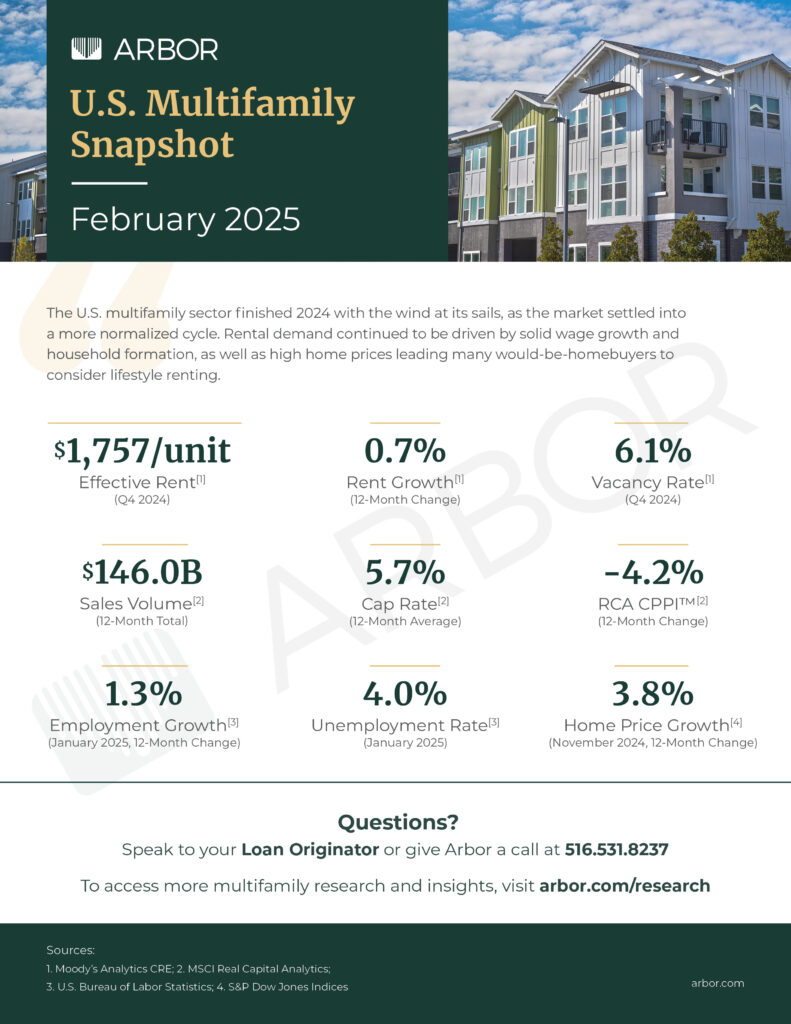U.S. Multifamily Market Snapshot — February 2025

Following the skyrocketing recovery from the pandemic-related contraction, the U.S. multifamily market settled into a more normalized cycle during 2024. With tailwinds from positive demographic trends, strong wage growth, and the continued fundamental need for more housing, opportunities have arisen for well-positioned multifamily investors.
Rental demand remained high, driven by the ongoing nationwide housing shortage and the continued trend of lifestyle renting. The historically high levels of new supply seen over the last two years appears to have peaked, while the growth of multifamily households extended its record-setting growth spurt. Investment activity showed increased deal flow during the year, with total volume falling in line with pre-pandemic norms.
Rent growth for the year was essentially flat, according to data from Moody’s Analytics CRE. However, the average effective rent remained more than 20% higher than during 2019. New supply pushed vacancy higher during the year, with the overall vacancy rate finishing at 6.1%, up slightly from 5.7% at the end of 2023. However, it was not much higher than the historic lows measured prior to the pandemic.
Multifamily sales volume during 2024 rose up to meet its 15-year average, as some investors took advantage of a brief window of relatively lower interest rates and financing costs, although activity was muted compared to the 2021 and 2022 pandemic recovery boom years. According to MSCI Real Capital Analytics, $146.0 billion in sales volume was recorded during the year, up 22% from 2023. The 12-month average cap rate was 5.7%, nearly unchanged year over year.
After some momentum changes were seen during the third quarter, the National Multifamily Housing Council (NMHC)’s Quarterly Survey of Apartment Market Conditions signaled less favorable conditions during the fourth quarter. NMHC noted that the surge in new supply continued to put downward pressure on market conditions, as survey respondents reported looser market conditions for the tenth consecutive quarter.
Additionally, a higher number of participants in NMHC’s Quarterly Survey of Apartment Construction & Development Activity reported experiencing construction delays, the first quarter of increased delays after five consecutive quarters of decline.
The multifamily market’s steady performance offers a strong basis for future growth, even amid the shifting economic landscape. Here’s a look at the U.S. multifamily finance and investment key benchmarks for Q4 2024.
Interested in the multifamily real estate investment market? Contact Arbor today to learn about our array of multifamily, single-family rental, and affordable housing financing options and view our multifamily articles and research reports.


